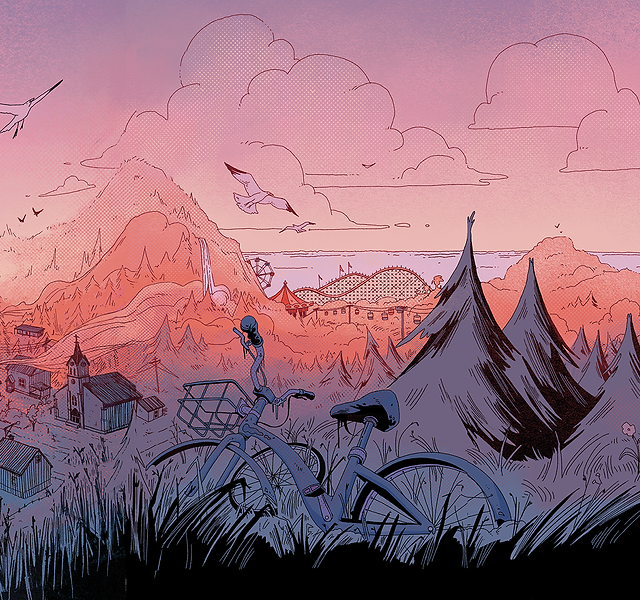The whole concept of TTRPGs was elusive to me prior to this class; of course I had heard about the prolific ones like Dungeons and Dragons, but aside from what I know from Stranger Things, even that was out of my scope. I definitely tend to gravitate more towards board and video games, so I was excited to learn about how exactly these games worked.
To prepare for our project, my group and I played Alice Is Missing. The game story is about a teenaged girl who goes missing, and the players’ efforts to figure out what exactly happened. Each player plays a different character who was close to Alice. Some examples are Alice’s brother, best friend, ex-boyfriend, and the boy who has a crush on her. There were also relationship cards that helped players establish social dynamics before the game started, both with Alice and with each other. The unique mechanic in this game was that players were meant to remain silent for the duration of the game, and instead were intended to communicate via group chat and direct message. I honestly really loved this mechanic, but do have some critiques about the accessibility of it; while players could theoretically use written notes instead of digital platforms, it would make the game extremely inconvenient, and I honestly would be reluctant to play if this was the case for me. However, regardless it was a unique feature of the game that definitely impacted the overall game experience.
The game worked by each player being distributed time cards (about 3 each in our case) that were to be played based on the time remaining on the clock. For instance, if a player had a card that had the number 60 on it, they would play that card when there was 60 minutes remaining. The timer totaled to 90 minutes, which also made it a relatively quick TTRPG to get through. Each card had an action on it that helped develop the story, providing a deck of suspect, location, and weapon cards that were oftentimes turned over by players on their turn. The game ends around the 5 minute mark, where one player is meant to “save” Alice, and you find out who makes it out safe and who did not escape the suspect.
This game overall was easy to understand (especially as someone who was completely in the dark about TTRPGs prior), and quick enough to play in one sitting, which I also appreciate. It also employed a unique mechanic that I think really heightened the overall tone of the game (I was very stressed the whole time, it was definitely very intense) as well as allowed players to really lean into the sort of pseudo-detective aspect of the game as well, which as a Clue fan, I personally love. I think that there was a limited capacity for player influence over the story, excluding the details however, especially compared to what I have gathered about other TTRPGs; however, this is most likely due to the time constraints that the game operates under, and I honestly do not really mind the additional structure that the constraints provide. If you are someone who is not super familiar with RPGs but want to learn more, I absolutely recommend this game as a way to get accustomed to the general structure of these games because it has an easy to follow story while also utilizing unique and entertaining mechanics.
